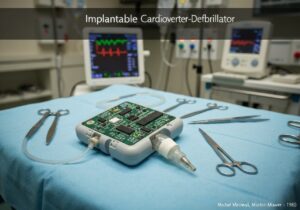A type of observational study that analyzes data from a population, or a representative subset, at a single point in time.
- Metodologie: Clienti e marketing, Economia, Lean Sigma, Produzione, Gestione del progetto, Qualità
Studio trasversale

Studio trasversale
- Assistenza sanitaria, Garanzia di qualità, Controllo di qualità, Gestione della qualità, Ricerca e sviluppo, Analisi statistica, Test statistici
Obiettivo:
Come si usa:
- Researchers collect data from a group of subjects simultaneously to investigate the prevalence of a condition or the relationship between variables. For example, a survey of factory workers on a single day to check for back pain symptoms.
Professionisti
- Relatively quick and inexpensive to conduct; can study multiple outcomes and exposures at once; provides a snapshot of the population at a specific time.
Contro
- Cannot establish a cause-and-effect relationship; is prone to certain biases (e.g., recall bias); does not capture changes over time.
Categorie:
- Clienti e marketing, Ergonomia, Qualità
Ideale per:
- Quickly gathering data on the prevalence of a condition or attitude within a population at one specific time.
Cross-sectional studies are widely employed across numerous disciplines such as healthcare, psychology, and market research, providing a cost-effective approach to capturing a population’s status at a single point in time. In product design, for instance, companies can use this methodology to assess user satisfaction or the prevalence of specific user behaviors by surveying customers regarding their experiences with existing products. This can occur during the early phases of product development, where understanding consumer attitudes can inform design iterations. In the medical field, researchers might analyze the simultaneous health records of a specific demographic to explore correlations between lifestyle factors and chronic diseases, allowing public health officials to better allocate resources based on the data collected. Within the engineering sector, cross-sectional research can evaluate the safety perceptions among workers across various facilities, which could lead to immediate adjustments in policy or equipment. Effective execution of these studies typically involves participation from a diverse range of stakeholders, including researchers, product managers, and target population representatives, ensuring the data reflects various perspectives and conditions. The approach serves organizations well, particularly when the need arises to address health interventions or refine products based on real-time feedback, ultimately enhancing decision-making processes without the prolonged timelines that longitudinal studies often entail.
Fasi chiave di questa metodologia
- Define the research question and objectives.
- Select the target population for the study.
- Determine the sample size needed for statistical significance.
- Develop and validate measurement instruments, such as surveys or questionnaires.
- Establish inclusion and exclusion criteria for participants.
- Administer the survey or assessment at a specific point in time.
- Ensure data collection adheres to ethical guidelines and confidentiality standards.
Suggerimenti per i professionisti
- Incorporate stratified sampling to ensure diverse representation of subgroups, enhancing the validity of the findings regarding conditions across different segments.
- Utilize validated instruments and questionnaires to assess variables, ensuring the reliability of the data collected on conditions like back pain.
- Integrate advanced data analysis techniques, such as regression models, to control for potential confounding variables while exploring relationships between conditions and exposures.
Leggere e confrontare diverse metodologie, raccomandiamo il
> Ampio archivio di metodologie <
insieme ad altre 400 metodologie.
I vostri commenti su questa metodologia o ulteriori informazioni sono benvenuti su sezione commenti qui sotto ↓ , così come tutte le idee o i link relativi all'ingegneria.
Contesto storico
1960
1960
1969
1976-05-28
1980
1990
1960
1965
1970
1980
1980
(se la data non è nota o non è rilevante, ad esempio "meccanica dei fluidi", viene fornita una stima approssimativa della sua notevole comparsa)











Post correlati
Questionari sul disagio muscoloscheletrico
Test multivariati (MVT)
Analisi di regressione multipla
Sistemi di cattura del movimento
Metodo MoSCoW
Test mediano dell'umore